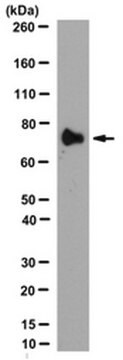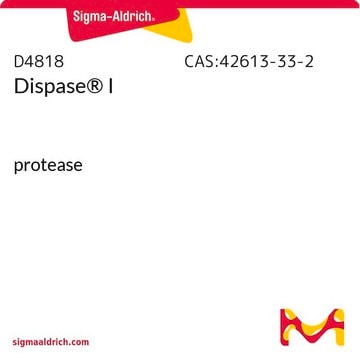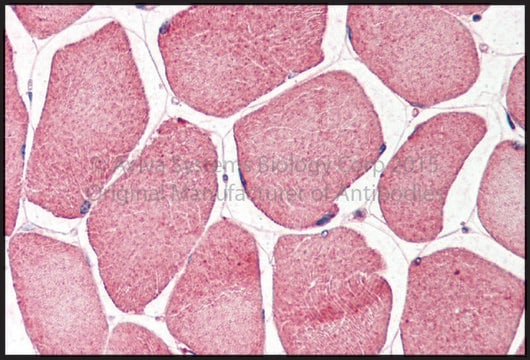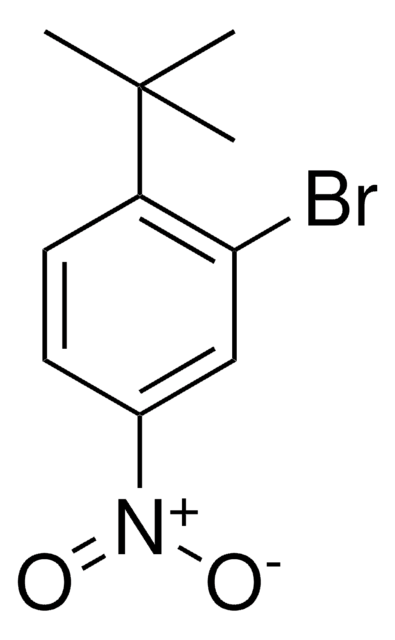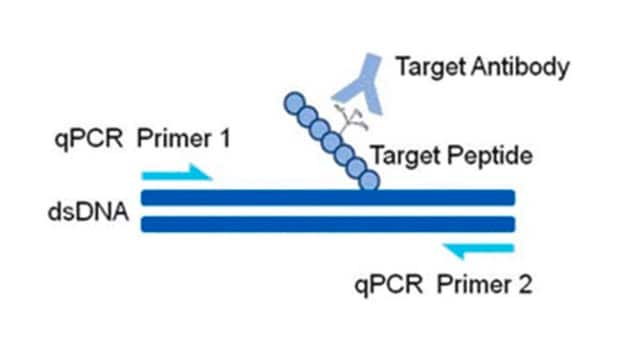MAB1581
Anti-Aggrecan Antibody
CHEMICON®, mouse monoclonal, Cat-315
Synonym(e):
CSPG
About This Item
Empfohlene Produkte
Produktbezeichnung
Anti-Chondroitin Sulfate Proteoglycan Antibody, Core Protein Epitope, clone Cat-315, ascites fluid, clone Cat-315, Chemicon®
Biologische Quelle
mouse
Qualitätsniveau
Antikörperform
ascites fluid
Antikörper-Produkttyp
primary antibodies
Klon
Cat-315, monoclonal
Speziesreaktivität
feline, rat
Hersteller/Markenname
Chemicon®
Methode(n)
immunocytochemistry: suitable
immunohistochemistry: suitable
immunoprecipitation (IP): suitable
western blot: suitable
Isotyp
IgM
UniProt-Hinterlegungsnummer
Versandbedingung
dry ice
Posttranslationale Modifikation Target
unmodified
Angaben zum Gen
human ... ACAN(176)
Spezifität
Immunogen
Anwendung
Immunocytochemistry: 1:500 on primary cultures of neurons.
Immunoblot: 1:5,000 recognizes a band at 680 kDa.
Immunoprecipitation.
Optimal working dilutions must be determined by the end user.
Rechtliche Hinweise
Sie haben nicht das passende Produkt gefunden?
Probieren Sie unser Produkt-Auswahlhilfe. aus.
Lagerklassenschlüssel
12 - Non Combustible Liquids
WGK
nwg
Flammpunkt (°F)
Not applicable
Flammpunkt (°C)
Not applicable
Analysenzertifikate (COA)
Suchen Sie nach Analysenzertifikate (COA), indem Sie die Lot-/Chargennummer des Produkts eingeben. Lot- und Chargennummern sind auf dem Produktetikett hinter den Wörtern ‘Lot’ oder ‘Batch’ (Lot oder Charge) zu finden.
Besitzen Sie dieses Produkt bereits?
In der Dokumentenbibliothek finden Sie die Dokumentation zu den Produkten, die Sie kürzlich erworben haben.
Active Filters
Unser Team von Wissenschaftlern verfügt über Erfahrung in allen Forschungsbereichen einschließlich Life Science, Materialwissenschaften, chemischer Synthese, Chromatographie, Analytik und vielen mehr..
Setzen Sie sich mit dem technischen Dienst in Verbindung.